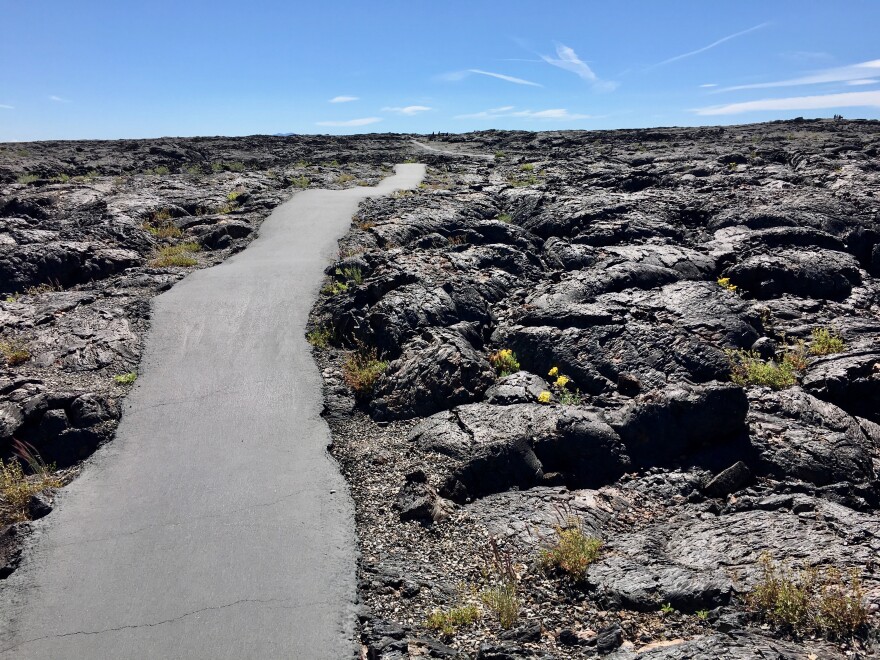Peak wildflower season is not exactly a scientific determination. But if Ted Stout, the head of interpretation and education at Craters of the Moon National Monument and Preserve, had to guess, he’d say this is the time.
“I believe it’s happening now. And it’s going to be really good throughout the month,” Stout says.
This year, he says, the tiny flowers are coming out a little late because of more spring rain and cool spells.
And now, many of the park’s 750 species of flowers are emerging.
Some of the flowers that grow at Craters of the Moon are only found there at the park. That’s because they're the ones that have figured out how to survive among the lava fields.
A specific type of flower that can be found growing in the cinder fields is called Dwarf Buckwheat. It resembles patches of coral with a few small petals poking out. Another flower with soft, white petals is called Bitterroot.
The soil these flowers grow in is really volcanic cinder rock.
“When the lava was coming out of the volcano it had lots of gas in it, sort of like when you take a soda and shake it out and pop the top, Stout says. "That lava foam came out, flew through the air, cooled off and then sprinkled down." That formed the cinder beds.
The flowers in the cinder fields are evenly spaced out because their roots extend for nearly three feet beneath the surface. That’s because the black lava rock can get up to 170 degrees Fahrenheit during the summer, so the roots reach out far and wide to gather up enough water.
Lava flowers can be found in the park as well — these are the ones that grow in the type of lava you would expect to see in Hawaii. The landscape is harsh. It's very windy and the lava rock is solid compared to the small, crumbly cinder field rocks. The lava here flowed like water and settled in smooth waves.

The flowers in this area are more sparse, but just around a corner are some Groundsel with green stems and golden-yellow petals, peeking out behind the black rock. Flowers like these, Stout says, congregate in the cracks and folds of the lava.
“Every one of these plants is growing up through a crack in the lava, so that’s how they’re able to survive in this environment because they have a place to put their roots," Stout says.
Over the last 15,000 years there have been frequent eruptions at Craters of the Moon, eight especially large ones. Each time, the lava flow wiped out the whole area, destroying all living things in its path. But soon after, wind blew soil into cracks, a few seeds fell in and plants began to grow.
Stout says visitors are amazed when they see brightly-colored flowers growing in this harsh landscape.
“It’s just amazing to see that anything grows out here at all. It’s just sort of extraordinary."
And if you miss peak season, he says, don't worry. Other species like Syringa — the state flower of Idaho — have their moments later in the summer.
Find reporter Rachel Cohen on Twitter @racheld_cohen
Copyright 2019 Boise State Public Radio




